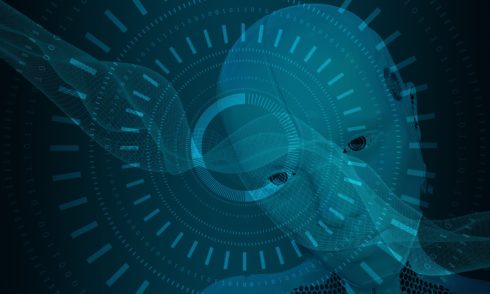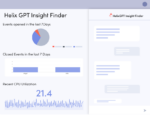
AIOps grew out of performance monitoring. Before AIOps, organizations relied on specialists staring at dashboards in Network Operations Centers to see any system anomalies. Then, they’d page someone to alert them to the problem, who would then do an analysis of the alert and try to find the root cause. And that person might have to message another person to begin remediation. A big problem with this approach was the number of false-positives that had to be weeded through; like the boy who cried wolf, real problems might be ignored because of all the noise.
AIOps introduced the ability to train the system to find these anomalies and analyze them, and determine if they were real or false — whether in an application, network, UX or infrastructure monitoring tool. According to software provider Micro Focus, there are three steps to getting organizations from their current monitoring strategies to AIOps.
“On average, enterprises have 23 monitoring tools,” said Tapan Shah, product manager, IT Operations Management at Micro Focus, referring to a recent EMA study. He added that the first step towards AIOps is to get all the IT data from the disparate systems organizations rely on into one place. “There’s value just in that,” he said.
Related content: Why automated AIOps is better than AIOps- and how to get there
Once the data is in one place, it can be analyzed and understood from multiple perspectives, the next steps are to introduce machine learning, and then automation.
Shah recommended starting with a single use case and using its success to get management buy-in. “AIOps will be an IT phenomenon,” he said. “Buy-in at the beginning leads to a smoother journey.”
Systems data can come from agent and agentless monitoring, APIs, logs, customer data, ITSM, social media, and more.
A number of tools are at a point where data scientists aren’t needed to get value from the products. These tools used unsupervised machine learning, meaning they train themselves based on the data that comes in to find patterns and anomalies, and consolidate a large volume of events to the few or one that matter, as Michael Procopio, Micro Focus senior product marketing manager, Operations Bridge, noted. IT data, he pointed out, is pretty well-defined. “Even log data, which is the least well-defined, works within reasonably defined limits, unlike say social media data,” he said. “You certainly won’t find any sarcasm in IT data. The need for a data scientist is less about the type of data as it is how well the tool is constructed. Are you getting a toolbox to assemble or a finished product that doesn’t require algorithm training or configuration.”
A 2019 Gartner report titled “Market Guide for AIOps Platforms,” says the functions of AIOps platforms include using machine learning for real-time analysis of streaming data at the point of ingestion and doing historical analysis of stored data. This learning helps the system discover and then recognize patterns and predict behavior, and to get to the root of incidents that are harming the system’s performance, Gartner wrote.
Once these capabilities are in place, automation can be brought in to extend these AIOps capabilities, in response to the rapid growth in data volumes being thrown off by multiple systems. Automating those jobs that recur, and being able to predict the success or failure of a change.
Further, automation can help with the remediation of events found by machine learning based on the system’s own knowledge of patterns and structure.
“When analysts first defined AIOps, they didn’t include automation, and we felt this was a great oversight,” said Procopio. “Recent definitions include automation. AI is only half the story. It gets you the insight, but it does nothing to fix the problem; that’s where the automation comes in. It adds a labor-free way to fix the problem. That is why automated AIOps is better. You’ll find a lot of solutions deliver the AI part but not the automation. We think having both provides significantly more benefits.”
The goal of all this is what Gartner terms “self-driving” IT operations management, though for now, it is more aspirational than reality for many enterprises.
To learn more about how to get to AIOps from where you are, join this webinar.
Content provided by Micro Focus and ITOps Times







